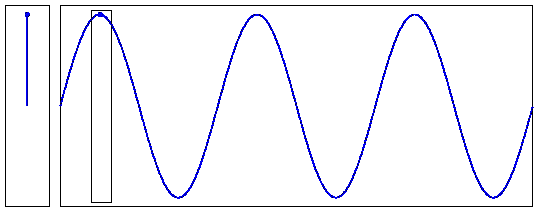The front (left) and side (right) views of a wave.

|
| [NMSU, N. Vogt] |
How does wavelength change with color?
 |
| [NMSU, N. Vogt] |
The front (left) and side (right) views of a wave.

|
| [NMSU, N. Vogt] |
How does wavelength change with color?
 |
| [NMSU, N. Vogt] |